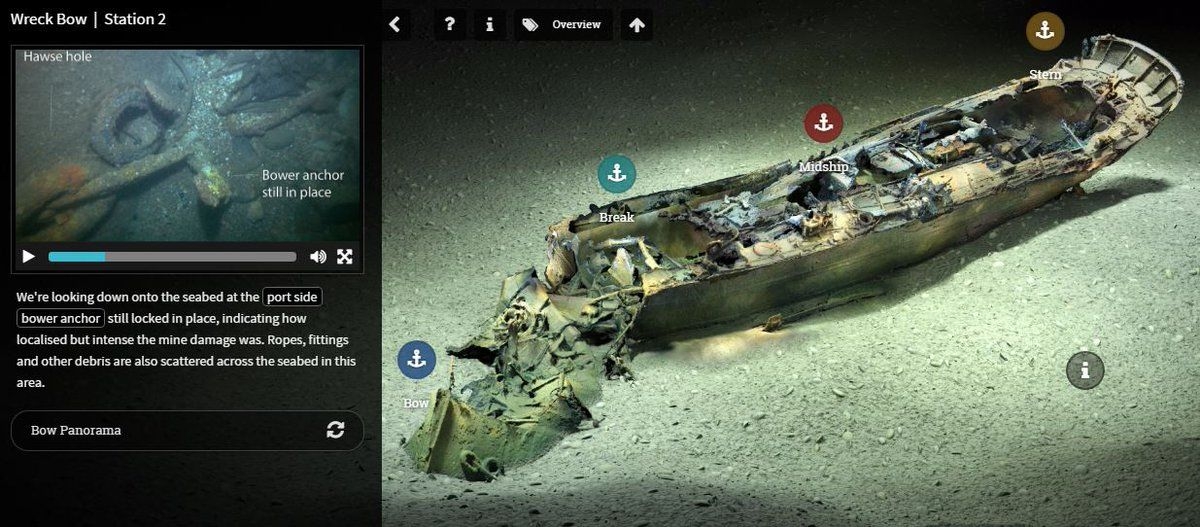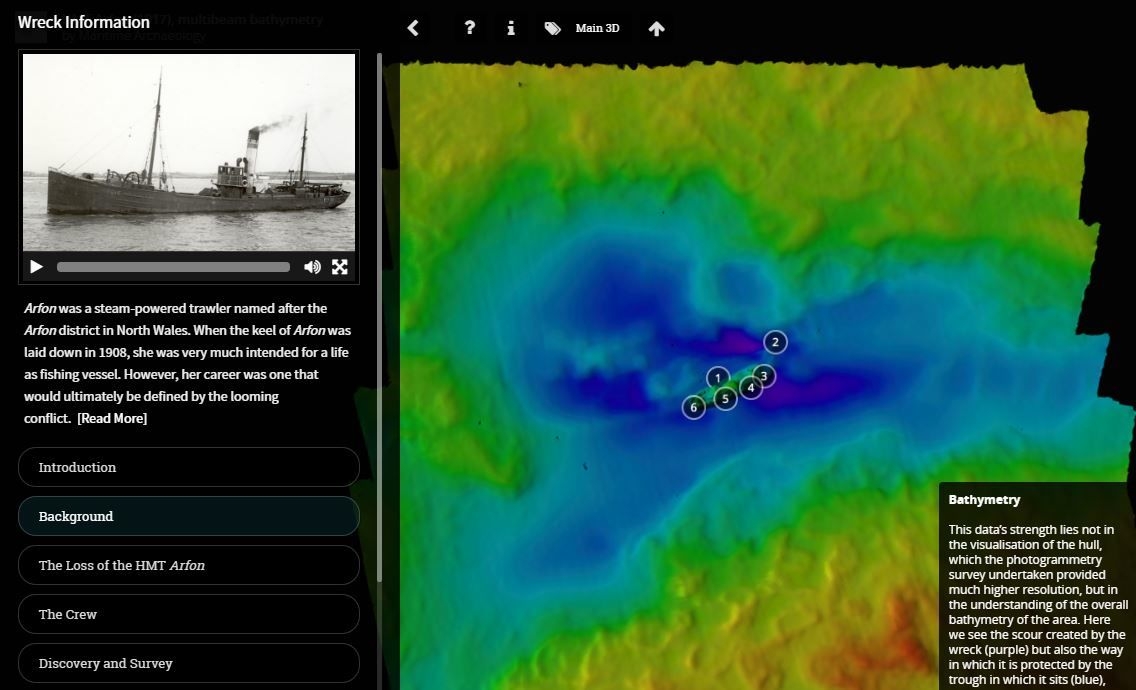Relatives have gathered on the Dorset coast of southern England to commemorate the crew of a trawler lost on mine-sweeping duties a century ago.
Wreaths were laid near the site where HMT Arfon sank after hitting a mine on 30 April 1917.
The trawler’s restored steam whistle was sounded for the first time since the tragedy, and a new information board, telling the story of the Arfon, was unveiled during the ceremony at St Aldhelm’s Head, near Swanage.
Fitted out as a mine-sweeper for the Royal Navy, HMT Arfon patrolled inshore shipping lanes for mines laid by German submarines in the English Channel.
Ten of the 13-crewmen died when the Portland-based vessel sank.
Divers Bryan and Martin Jones, who discovered the wreck three years ago, brought together 20 descendants for the 2017 Centenary on April 30.

A new online dive trail, produced by the Maritime Archaeology Trust, provides a 3D tour of the wreck site (Image © Maritime Archaeology Trust)
Martin Jones said: “I have found it enormously rewarding sharing the information with the descendants of three of the crew and meeting them all on the centenary commemoration.
“We would like to thank Historic England and the Maritime Archaeology Trust for the enormous amount of work that they have contributed to this project and we hope the Arfon will be left in its pristine condition and respected for its rarity and historical value for many years to come.”
Protected
As reported by Centenary News in 2016, the ‘exceptionally well-preserved’ wreck site was given special protection by the UK Government on the advice of conservationists, Historic England.
Martin Jones, the Historic England-appointed licensee of the wreck, describes how the discovery was made: “In 2013, by pure luck, whilst on a diving trip to another wreck, I spotted an anomaly on the seabed. I marked the position on the GPS, but it was not until 2014 that my son, Bryan Jones, dived the site for the first time.”
Ongoing research, also involving Dave Wendes, a local maritime historian, confirmed that it was the lost wreck of the Arfon, lying more than 40 metres below the surface, in a depression in the seabed.

The Maritime Archaeology Trust’s newly-launched virtual 3D tour of the site is derived from more than 10,000 images collected by its divers in 2016/17. MAT’s Director, Garry Momber, attended the Centenary tribute (Image © MAT)
Funded by Historic England, the online guide tells the story of Arfon’s crew and their vessel, using interactive information points, audio and videos, images, animations and 360 underwater panoramas of the wreck.
Alison James, maritime archaeologist for Historic England said: “The new interpretation panel and virtual dive trail to commemorate the sinking of the Arfon will allow non-divers to find out much more about this fascinating wreck site.”
‘HMT Arfon’ is protected under UK law by the Department for Culture Media and Sport. It means that access to the site is restricted only to divers who have been granted a licence by Historic England.
The Maritime Archaeology Trust, based in Southampton, is leading a UK Lottery-funded centenary project, exploring ‘Forgotten Wrecks of the First World War’.
Information & images: Maritime Archaeology Trust
Posted by: CN Editorial Team
